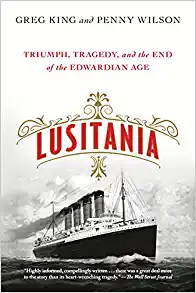HOW TO READ, THINK, AND STRUCTURE
Michael Sean Quinn*
Sometimes there are brief and succinct formulations of the la> such that if L grasps it deeply–down into the lawyer-component of his inner being, s/he will understand the legal situation and know what needs to be done. Contract, and therefore insurance policy interpretation is like this, and a recent Texas Supreme Court case provides exactly what I am talking about.
The case is U.S. Metals Incorporated v. Liberty Mutual Group, Incorporated dba Liberty Insurance Corporation, 14-0753 (Supreme Court of Texas, decided December 4, 2015. The Court is analyzing the meaning of the language in an insurance policy. Here is what it said in formulating what it called “[a] few basic principles [that] guide our analysis”:
“The interpretation of and insurance policy, like other contracts, begins with the text, and requires that undefined words be given their plain, ordinary, and generally accepted meanings absent some indication of a different intent. An interpretation that given each word meaning is preferable to one that renders one [of the words] surplusage. And a policy provision is ambiguous only if it is subject to more than one reasonable interpretation and not merely because the parties or other courts differ over its interpretation.”
Sound simplistic, axiomatic, the stuff of Contract Law 101. Surely. All those things upon cursory reading. But consider sitting with, or even looking, staring it, and contemplating it. You will find it rich and a profound source of sound guidance. In part, these observations are not Contract 101 or Insurance 201 because in those courses, the case books supply only cases–if they prevent more than one–in which ambiguity was found and thereby leave the student with the impression that court findings of ambiguity happens often. See below.
Interestingly, the court does not say here that if there is an ambiguity, at least in an insurance policy, the is a presumption that the insured’s interpretation of the provision is correct, even if, of the two differing views, the insured’s is the less plausible or semantically attractive. The same rule probably applies to other contracts with the non-drafting party entitled to an analogous presumption. This too is profound guidance, when the right sort of matters come up.
Another thing the court does not say is that, as a matter of empirical fact, courts finding provisions of insurance policies ambiguous is extremely rare. Trial court judges know this, as do the appellate judges. Thus, the trial court judges know that there is little danger than they will be reversed if they say “No ambiguity here.”
I personally have spend many, many hours of trying to find–some might say “invent”–ambiguities that might persuade a court. I have succeeded only very rarely. In my view, “mere [or “ordinary”] ambiguity is not recognized as by courts as ambiguity, as “court ambiguity,” my phrase. To be “court ambiguity” the term must be very ambiguous, and it must be in an absolutely crucial section of the phraseology. What courts as “mere” ambiguity versus “court ambiguity”? Not everyone knows it when s/he sees it, so contemplation on the basic principle is worth your time.
Usually L’s trying hard to find an ambiguity in an oft used insurance policy is a waste of L’s time and of C’s money. True, it did work to some extent in environmental litigation a couple of decades ago, but it doesn’t much any more. I have heard large firm lawyers repeatedly claims that they have protected and extended their clients’ interests by finding “court ambiguity.” I believe fore various reasons that this is lawyer braggadocio, a lack of memory, a misunderstanding of case history, or simply self-deception, none of which is infrequent.
If it’s going to be found systematically in the near future it will be in “cyber” (or “digital”) insurance-dispute (often what are known as coverage) cases. In that area, there has been relatively little reported insurance litigation, as this sort of thing goes, and/or, to be sure, there are not established and systematically enforced policy patterns.
Moreover, technical engineering terms are often well defined, so my sense of more “court ambiguity” found in the virtual world may simply be the fantasy of an addicted “ambiguity looker.” TV and similar talk does not by itself create “court ambiguity.”
*Michael Sean Quinn
1300 West Lynn Suite 208
Austin, TX 78703
Phone: 512-296-2594
Cell:512-656-0503
Fax: 512-344-9466
Email: mquinn@msqlaw.com




Recent Comments